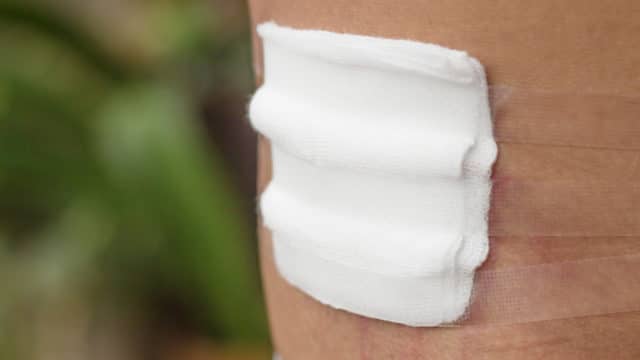Why Choose a Wound Care Center?

If you are among the nearly 7 million Americans currently living with a chronic wound, you may need specialized care. Non-healing wounds can limit your quality of life and can even be life-threatening. The longer a chronic wound goes untreated, the greater your risk of infection. This could lead to hospitalizations, amputations or even death.
There is hope for non-healing wounds with advanced care at your Wound Care Center. You can find a Center and schedule an appointment here.
What to Expect at a Wound Care Center
At your first visit, you will meet your care team who will help your wound heal. This includes doctors and clinicians who are specialty-trained in wound care. They will ask questions about your personal and family medical history.
You may need additional tests such as blood tests, x-rays, or ultrasound tests to help identify what is preventing your wound from healing. You may also need additional procedures to help your wound begin to heal again. This could mean a debridement, which is a way to remove dead tissue from the wound, or procedures to improve your blood flow.
Your clinical team will work together to create your individual plan of care. Digital photos and precise measurements of your wound are analyzed. Your healing progress is compared to clinical evidence from more than 2.9 million wounds.
-
-
- Your clinical team will take pictures of your wound at each visit.
- Your healing progress will be continuously monitored and analyzed.
- Your individual treatments will be adjusted to your healing progress.
- You will see charts and photos that show how your wound is healing.
-
Types of Advanced Wound Care Treatments
Wound Care Centers provide specialized care to help wounds heal faster. Your individual plan of care may include one or more of the following treatments.
Debridement is the process of removing dead tissue from wounds. It is necessary for healing because dead tissue hinders the growth of new cells. Dead tissue also makes it easier for infection to occur.
Pressure relief, including total contact casting or off-loading, requires that no weight or pressure is put on the wounded area. Interventions to prevent weight-bearing include boots, shoes, casts, wheelchairs, special seat cushions or mattresses.
Tissue-growing therapies help new skin cells develop by delivering artificial or manufactured cells or tissue to the wound. This activates the body’s ability to repair and regenerate through new cell growth.
Negative pressure wound therapy involves placing a vacuum over a dressed wound. The suction draws the fluid from the body through the wound and stimulates blood flow to the wound.
Hyperbaric Oxygen Therapy (HBO) helps new blood vessels and tissue growth. The pressurized, oxygen-rich environment helps blood plasma to carry up to 20 times the normal amount of oxygen.
You do not have to let a chronic wound limit your quality of life. Seek specialized care today and find a Wound Care Center® near you.



